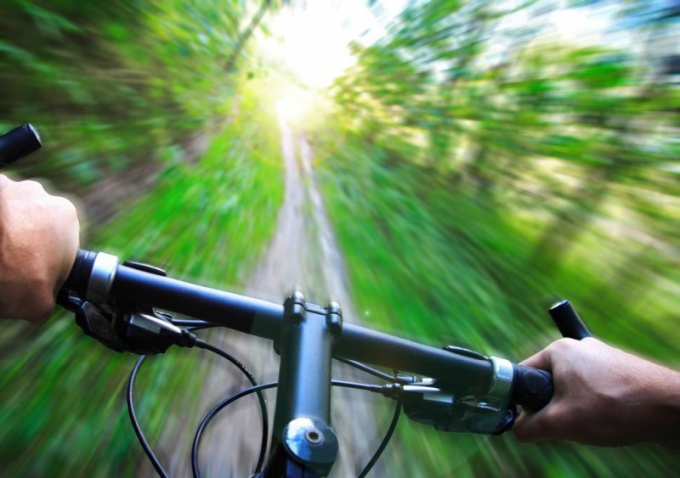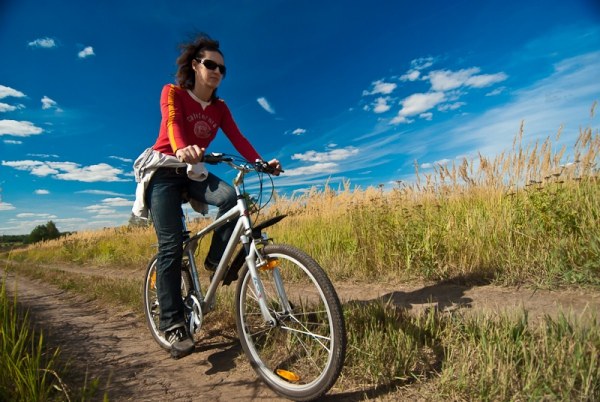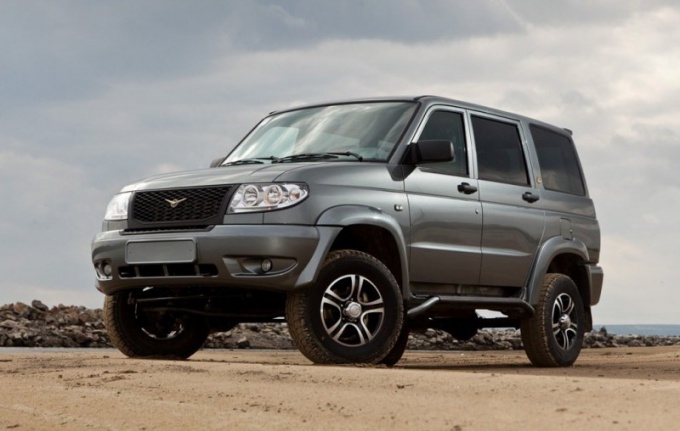Tip 1: How many speeds does a bicycle have?
Tip 1: How many speeds does a bicycle have?
Modern bicycles have mechanisms for switching speeds, working by jumping the chain from one star to another. Therefore, the maximum number of speeds depends on the number of stars.
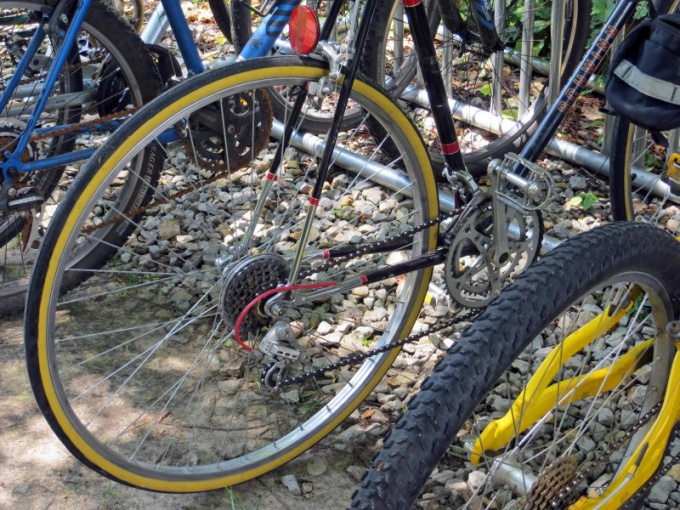
Modern bicycles have a maximum number ofspeeds can reach 30. The number of speeds depends on the number of front and rear stars. The bicycle speed switch is required for comfortable driving on rough terrain. For example, when driving on a hill, you should switch the speed to lower gears, and go from the hill to the high gear. By switching speeds, when necessary, the cyclist saves his energy.
How to determine the number of speeds
Nominal number of speeds is determinedvariants of combinations of front and rear stars. For example, if the bike has 10 rear stars and 3 front ones, then the nominal number of speeds will be 30, and if behind 9 stars, then 27. However, there is one nuance - the actual number of speeds that you can use will be less. This is due to the fact that due to misalignment and improper chain tension, all possible combinations of stars should not be used.Optimum speed switching
To avoid skewing and jumping off the chainit is recommended to switch speeds as follows: • The first front star works with the rear stars in the combinations 1-1, 1-2, 1-3 and 1-4. • The second front star works with the back stars in the combinations 2-4, 2-5, 2-6 and 2-7 • The third front star works with the rear stars in combinations 3-6, 3-7, 3-8 and 3- 9. As a result, it turns out that a bicycle with three front and nine rear stars nominally has 27 speeds (3 * 9 = 27), but in fact it will have only 12 speeds. And this is enough for trips around the terrain with any relief. It should be noted that it is not necessary to adhere to this scheme, but when using the optimal combinations of the switching of stars, the wear of the chain decreases substantially.How to correctly switch speeds
When driving against the wind, along sand, clay, wetdirt or uphill, it is necessary to "dump" the front gear. Then it will be easier to pedal, maneuver and gain speed. The first forward gear is optimal for lifting, if you do not want to apply great physical effort. The second gear is suitable for small rises and driving through forest drogs. On the third front gear (the biggest star) it is recommended to switch during the ride around the city. In this case, the rear gear is switched in accordance with the above-mentioned speed switching scheme.Tip 2: How to switch speeds on a bike
Switch speeds on bicycle - it is not difficult. Just follow some simple rules to make your riding style more comfortable and efficient. In addition, your speed switches will serve you longer, allowing you to save a lot of money.
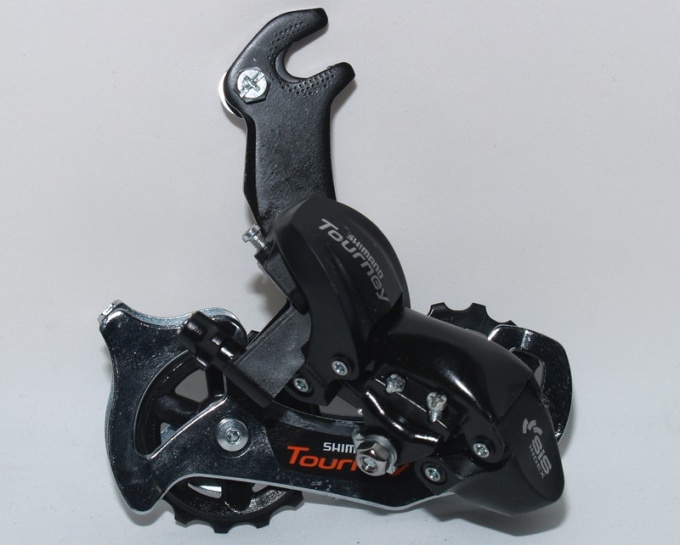
Instructions
1
Gear shift during lift. Here you should not switch speeds if necessary, otherwise you risk losing your rhythmand the inertia of your movement. Also, it is not necessary to switch the gears during the rapid torsion of the pedals, because this will lead to a rapid wear of those parts that are subjected to the greatest load during braking.
2
The most common mistakehobbyists is the rare use of the front derailleur gear. Perhaps this is due to the fear of flying over the steering wheel of a bicycle upside down. Of course, if the speed is very high, the front brakes are best not to use or use them for gradual braking. However, the front brakes are twice as effective as the rear brakes, so it's worth considering where the brakes are best used.
3
You have the opportunity to quicklygain the necessary speed with one switch on the front cassette (instead of two on the rear). Entering the rhythm of movement, you can use the rear switch to correct the transmission more accurately. Remember that you first need to choose the right gear, and then adjust the transmission with the rear switch.
4
If you are preparing to go down, the desired gear should be chosen well in advance. At the very same time, you will not have any more time. There will already have to monitor the control of the bike and maneuver.
5
As you move around, assess the surrounding area in order to pre-select the desired gear. The speed at bicycle You should choose the same way as on the machine: your optimal transmission for each speeds.
Tip 3: How to determine the wind speed
Speed the wind can be determined using the Beaufort scale, developed in 1806. The process of determining is to visually examine the interaction the wind with various objects on land and in the sea.

Instructions
1
To determine the speed the wind, meaning calm and reaching 1 km / h, youshould note that the leaves on the trees remain stationary, and the smoke rises strictly vertically. At sea, calmness corresponds to a mirror surface and complete absence of excitement.
2
Determine if there are smoke deviations fromvertical direction and whether the leaves are still. At the same time, there is a slight ripple on the sea, and the height of the waves fluctuates within 10 cm. If this is so, then the speed the wind is from 2 to 5 km / h and corresponds to 1 point on the Beaufort scale. This wind is called quiet.
3
When the wind weakly rushes the leaves of trees,slightly turns the weather vane and is felt by the face, it means that its speed reaches from 6 to 11 km / h. At sea, a light wind corresponds to the appearance of short waves and glassy ridges.
4
In order to determine a weak wind of 3points on the Beaufort scale, see if the thin branches are swaying and if the smoke emerging from the top of the pipe is falling. At sea with such a wind there is a slight excitement, foamy crests and small white lambs. Speed weak the wind varies from 12 to 19 km / h.
5
If the wind is moderate, you will notice that the dustrises from the ground, the smoke dissolves in the air, and the branches of medium size actively vibrate. Waves on the sea reach 1.5 meters in height. Moderate wind corresponds to a speed of 20 to 28 km / h.
6
To determine the speed equal to 5Beaufort scale, note that the wind is felt by the hands and whistles in the ears, the thin trunks of trees swing. The sea is restless, with a lot of white lambs, and the height of the waves reaches 2 meters. This wind is called fresh, and its speed can reach 38 km / h.
7
With a strong wind, you will see that the thin trunkstrees bend, and hear the buzz of telegraph wires. On the sea there will be waves rising to 3 meters, water dust and large ridges. Strong wind corresponds to a speed of 39 to 49 km / h.
8
Large branches bend to the ground, and go against the wind becomes difficult - this means that histhe speed reaches from 50 to 61 km / h. On the sea there is strong excitement, foam breaks off the crests of the waves and spreads along the wind. This wind corresponds to 8 points on the Beaufort scale and is called strong.
9
With a very strong wind, branches of trees beginit's impossible to talk, but it's impossible to talk. Waves on the sea reach 7 meters in height, from the edges of the crests fly off splashes. This wind corresponds to a speed of 62 to 74 km / h.
10
To determine the speed equal to 9Beaufort scale, note that the wind bends large trees, breaks large branches and tears roof tiles. The crests of sea waves reach 8 meters in height, topple over and scatter into splashes. Such a wind is called a storm, and its speed can reach 88 km / h.
11
A strong storm on land is very rare. It destroys buildings, pulls trees from the root. Speed the wind When a strong storm fluctuates from 89 to 102 km / h. The surface of the sea is white with foam, and the height of the waves reaches 10 meters.
12
In a severe storm, severe destruction is observed in vast areas. Speed the wind is a maximum of 117 km / h. Small vessels can not be seen because of waves whose height can reach 11 meters.
13
The wind, leaving behind devastating destruction, is called a hurricane. The air on the sea is filled with foam and spray, visibility is difficult. Waves exceed 11 meters in height. Speed The hurricane makes more than 117 km / h.
Tip 4: How many speeds can a bicycle have
Modern bicycle - high-techvehicle on two wheels. If earlier for the ride lacked only one system "pedal-rear wheel", but now they have a speed system. It is worthwhile to figure out how many speeds a bicycle can have.
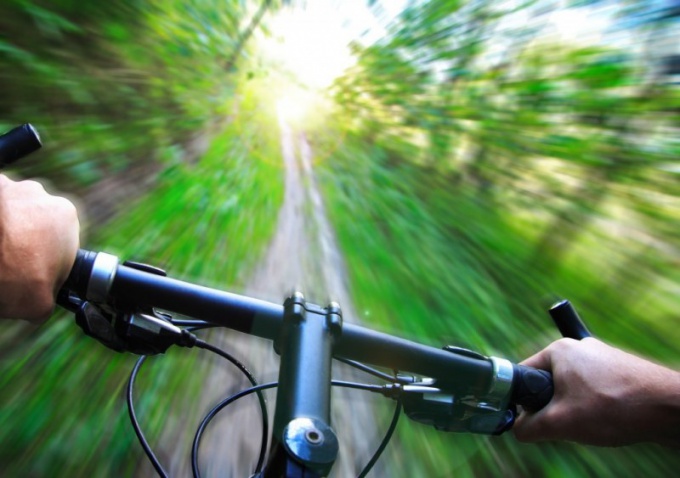
Bicycle Stars
It is in them the whole thing. The number of bicycle speeds directly depends on their number. On most of the bicycles (road and cross-countrey) now produced, the stars are installed both on the rear wheel and on the cassette (where the pedals are). In order to find out how many speeds a particular bicycle has, it is necessary to multiply the number of rear and front stars. For example, if behind 7 stars, and in front - 3, then the bike is 21-speed.
The number of speeds can vary from 10 (5stars behind and 2 in front) to 30 (10 stars behind and 3 front). Manufacturers of bicycles most often prefer to produce bicycles with 21 speeds. These are light-alloy bicycles, with a front shock-absorbing fork, designed for driving not only in the city, but also off-road. A large number of speeds differ road bikes with narrow wheels with a diameter of 27 to 31 cm. Smaller - children's bicycles.
A little bit about the correct switching of speeds
In order to avoid premature wear and tearcassettes, chains and gearshift systems in general, it is necessary to adhere to a number of simple rules. First, do not switch the speed during the ascent. The tension of the chain is also not weak, and even on the chain there is an instantaneous load during a jump from one star to another. You should choose the slowest speed for lifting (in other words, choose the largest star behind and the smallest in front, the speeds are switched for both the rear wheel and the cassette.) Simply speaking, the first speed on both switches is selected for lifting.
Secondly, it is necessary to switch the speed only intime of riding a bicycle when the pedals are spinning. Otherwise, during the start of the bike a person can hear not the most pleasant sound from the chain. This will affect its wear and tear.
The third rule is the difference between the speeds(chain stars) should not be greater than 4. That is, do not choose the lowest speed on the front / rear star and the highest on the other. Because of this, the chain can stretch faster than it is laid by the chain manufacturer. A stretched chain will break the system as a whole. This is not a very pleasant and not the cheapest repair. The cost of a good switching system can be more than one thousand rubles.
Well, the last - you need to regularly lubricatechain. A signal that it is time to do this can become extraneous metal noise from the circuit or a kind of rustle during the ride. If the bicycle is operated carefully and not off-road, it will be necessary to wipe the chain with a dry rag from dirt, and then lubricate with a special bicycle grease for the chain. If the bicycle is a frequent guest of village roads or sandy beaches, before lubricating it will be necessary to rinse the chain with kerosene or a special mixture for cleaning the chain.
